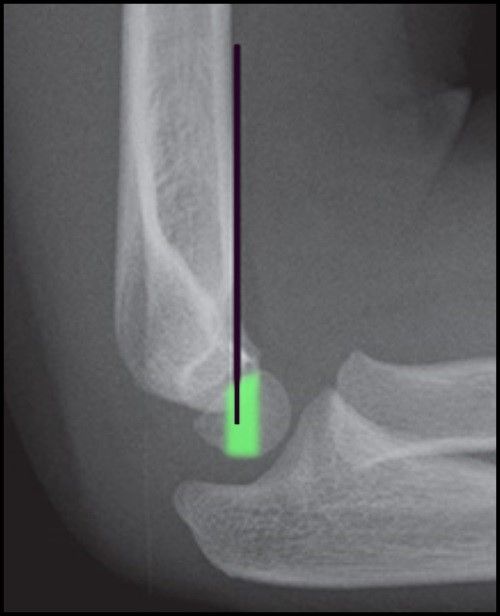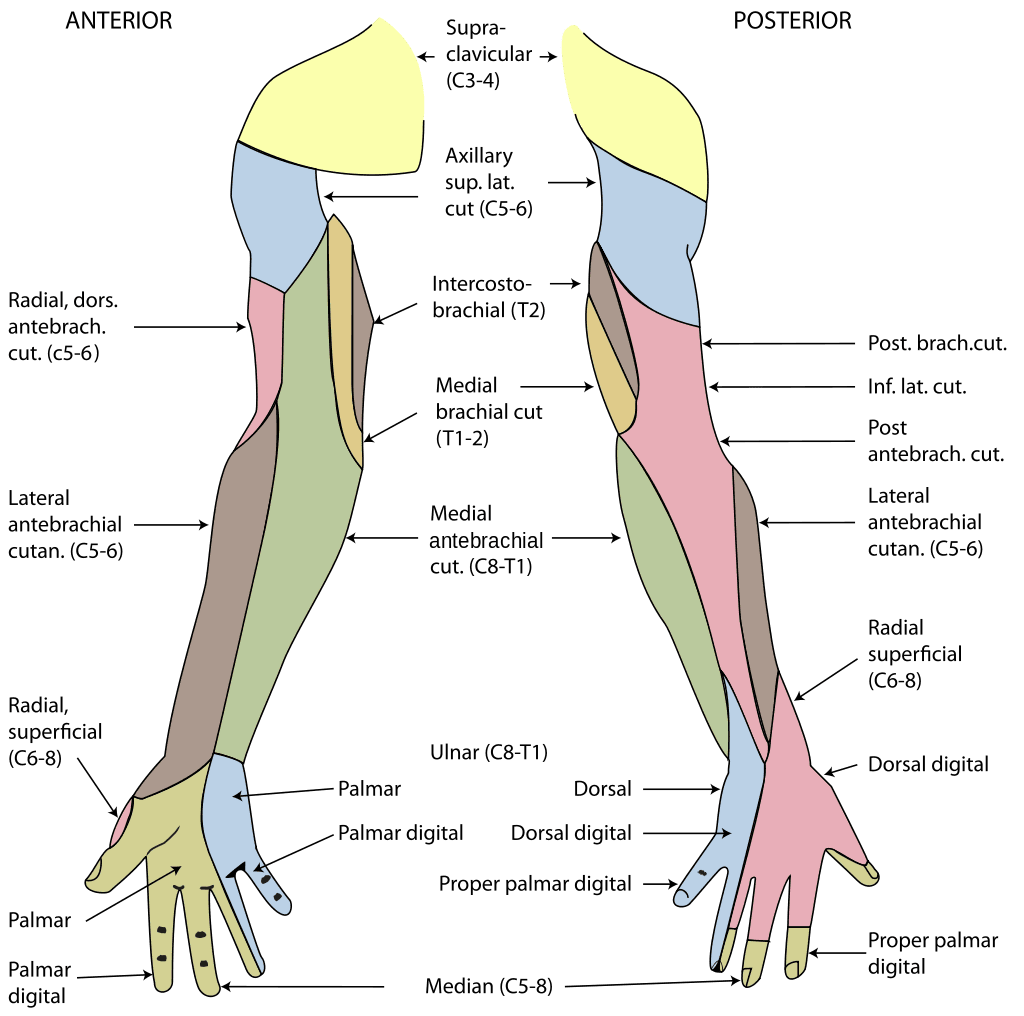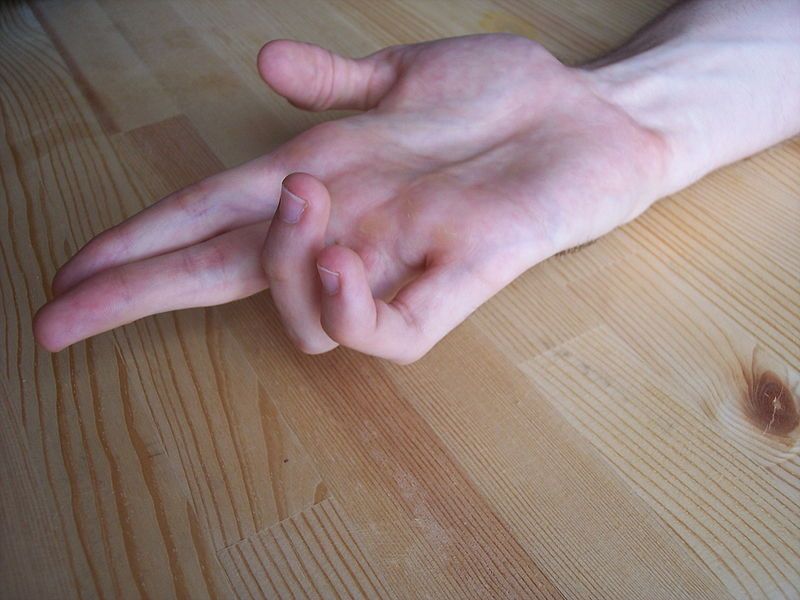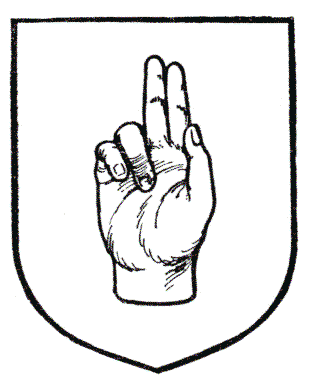Next Lesson - Conditions of the Elbow
Core
Want more information on anatomy before you begin looking at conditions? Head to our articles on Muscles of the Upper Arm, Muscles of the Forearm and Bones of the Upper Limb for more information!
Supracondylar Fracture of the Distal Humerus
Supracondylar fractures of the distal humerus are usually caused by a fall onto an outstretched hand (FOOSH) with a hyperextended elbow. They occur most commonly in children and make up around 75% of ‘elbow’ injuries. The distal fragment is usually displaced posteriorly. This condition presents with pain, deformity and reduced function of the elbow joint.
Complications of a supracondylar fracture of the distal humerus include:
Damage to ulnar, radial or median nerves (all described later in this article) - the ulnar nerve is most commonly damaged.
‘Gunstock deformity’ - where malunion of the fragments results in cubitus varus, an abnormality when an extended elbow has a lateral deviation.
Volkmann’s ischaemic contracture - where damage to the brachial artery causes compartment syndrome, which leads to infarction resulting in fibrotic repair. This complication presents with elbow flexion, forearm pronation, wrist flexion, metacarpal-phalangeal joint extension and interphalangeal joint flexion.
This condition is diagnosed with an x-ray. The treatment involves a cast or splint to promote natural healing for a less severe fracture, or surgery (usually a closed reduction) for a more severe fracture.

Diagram - An X-Ray of a normal humerus. The black line (the anterior humeral line) should normally pass through the middle third of the capitulum (highlighted green), but if it doesn't, it indicates that there is a supracondylar humerus fracture
Creative commons source by Tracy Kilborn, Halvani Moodley, Stewart Mears and Mikael Häggström [CC BY-SA 4.0 (https://creativecommons.org/licenses/by-sa/4.0)]
A high injury to the radial nerve usually occurs due to a mid-shaft humeral fracture. This is because the radial nerve runs in the ‘radial groove’ of the humerus, so can be damaged by this mechanism. It presents with:
- Flexion of the wrists.
- Flexion at the metacarpal-phalangeal joints.
- Paraesthesia of the dorsal aspect of the 1st, 2nd and 3rd digits (excluding the fingertips).
Elbow extension is spared in the majority of high radial injuries, due to the branch that innervates triceps brachii being given off proximal to the site of injury.
Treatment typically involves restriction of movement with a splint, so that the nerve has time to heal, or it may require surgery. Complete recovery can take anywhere from a few weeks to six months, or recovery may not be possible at all.

Diagram - The cutaneous innervation of the upper limbs. The radial nerve innervation can be seen in pink
Creative commons source by Henry Gray (1918) Anatomy of the Human Body, modified by Fred the Oyster [CC BY-SA 4.0 (https://creativecommons.org/licenses/by-sa/4.0)]
A high injury to the ulnar nerve usually occurs due to a medial epicondyle fracture. It presents with:
- A ‘high ulnar claw’ when asked to extend all the fingers:
- Hyperextensionof the 4th and 5th digits at the metacarpal-phalangeal joints.
- Flexionof the 4th and 5th digits at the proximal interphalangeal joints but not at the distal interphalangeal joints due to flexor digitorum profundus being paralysed.
- Paraesthesia of the 4th and 5th digits and medial border of the hand.
Treatment typically involves restriction of movement with a splint, so that the nerve has time to heal, or it may require surgery. Complete recovery can take anywhere from a few weeks to six months, or recovery may not be possible at all.
It is important to distinguish between the appearance of the high ulnar claw, and the low ulnar claw that is described in the article Conditions of the Wrist. Unexpectedly, the appearance of the low ulnar claw is more severe than the appearance of the high ulnar claw. This is because with a high ulnar nerve injury, the innervation to flexor digitorum profundus is destroyed, meaning the fingers cannot flex as much as they can in a low ulnar nerve injury, when this muscle is spared. This is called the ‘Ulnar paradox’.

Image - An example of a high ulnar claw
Creative commons source by Mcstrother [CC BY-SA 4.0 (https://creativecommons.org/licenses/by-sa/4.0)]
A high injury to the median nerve usually occurs due to a supracondylar humeral fracture. It presents with:
- Forearm supination
- The ‘Hand of Benediction’ when asked to form a fist:
- Flexion of 4th and 5th digits.
- Extension of 2nd and 3rd digits.
- Extension and adduction of the 1st digit.
- Paraesthesia of the palmar aspect of the lateral hand and 1st, 2nd and 3rd digits.
Treatment typically involves restriction of movement with a splint, so that the nerve has time to heal, or it may require surgery. Complete recovery can take anywhere from a few weeks to six months, or recovery may not be possible at all.

Image - A drawing of the 'Hand of Benediction'
Creative commons source by Arthur Charles Fox-Davies [CC BY-SA 4.0 (https://creativecommons.org/licenses/by-sa/4.0)]
Edited by: Dr. Thomas Burnell and Dr. Maddie Swannack
- 4968

